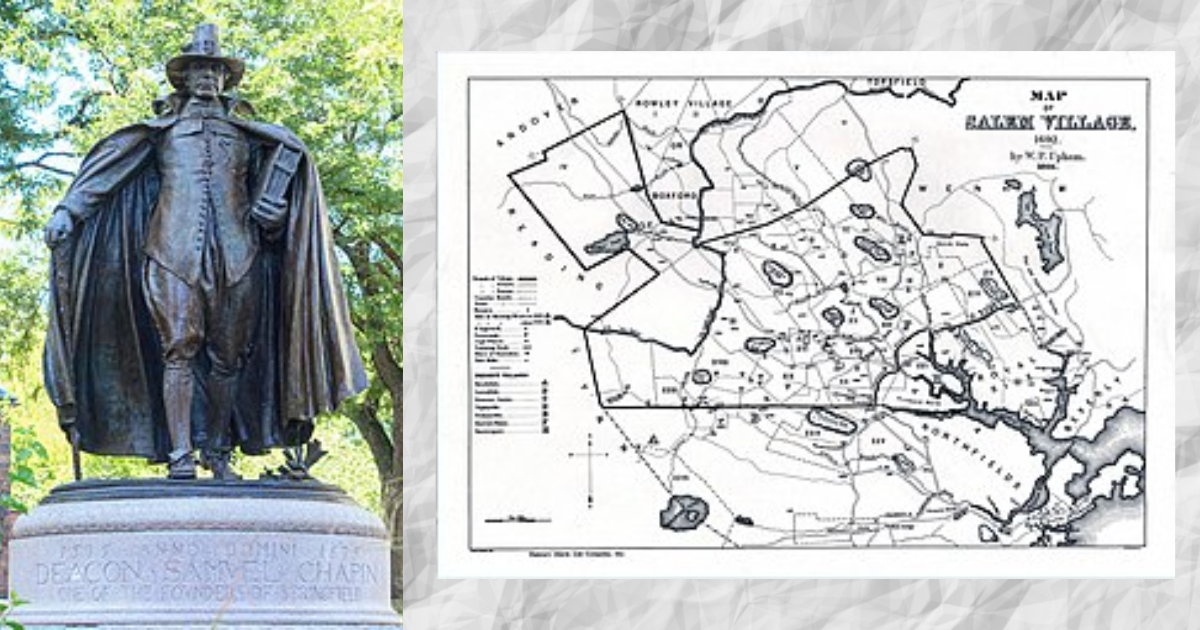The Salem witch trials were a series of trials and prosecutions which began in 1692 in Salem, Massachusetts. These trials were based on the superstitious beliefs of the people, who claimed they were possessed by the devil. After one incident involving the mysterious behavior of two sisters, the rumors spread of witchcraft being performed.This soon led to the hanging of 19 men and women accused of practicing witchcraft. The Salem witch trials ended in 1693, with the court annulling guilty verdicts against the people accused of witchcraft.
What Happened in Salem (The Salem witch trials)
There were two Salem’s in colonial Massachusetts. One was the Salem town (now Salem), and the other was the Salem village (now Danvers). Both of the Salem were opposites, while Salem town was a bustling trade market, Salem village was poor. Salem village was established by Puritans. The witch trials were held on the women of Salem village.
It all happened during one of the harshest winters the village has seen in years. In 1692, two cousin sisters, 9-year-old Betty Parris, and 11 years old Abigail Williams, started behaving strangely. They had fits, they screamed, threw things, contorted their bodies, and uttered strange words.
You may like: Spiritual Awakening process | Inner Journey
A doctor was called to check them but he found nothing wrong with the girls. But he diagnosed that they were under an evil hand. The news spread about the girl’s condition, soon 12 girls had similar symptoms; they had fits and complained of prickling skin. Four girls accused three local women of tormenting them.
The accused were Sarah Good, a poor pregnant woman, and mother of a young daughter. Sarah Osbourne, who had long been absent from the church and Tituba an enslaved woman in Betty Parris’s home. All three women were considered outsiders in some way and were from the marginalized section of the village.
The Witch Trials

Tituba initially stated that she did not do anything to the girls. But she was badgered by the authorities, and after realizing her status as a slave who will eventually become the scapegoat. She told the magistrates what they wanted to hear. She said she met the devil and there were other witches in the Salem village, who were doing the devil’s bidding.
She said that both Osbourne and Good were also witches. Osbourne and Good denied this acquisition and pleaded their innocence. But magistrates heard what they wanted to do. For giving information Tituba was set free. Osbourne died in prison. While Good’s husband turned against her and gave a testimony claiming that she was a witch.
Good gave birth to her child in prison. Her newborn child died and she was convicted and hanged shortly thereafter. This was just the beginning, as after Tituba confessed to other witches present in Salem village, hysteria spread. As the hysteria spread, this time people accused of witchcraft were not outsiders; they belonged to upstanding members of the community.
This led to the establishment of special courts. The trials were not fair as the people accused were not given a lawyer to defend themselves. Not only women but men and children were also accused of witchcraft. This hysteria ended with the death of 24 people. 19 people were convicted of witchcraft and were given death punishment, and many died in prison.
The Hysteria Ends
In 1693, the trials were losing public support, the trials finally stopped. In the years to come, many individuals and institutional acts of repentance were made. In January 1697, the General Court of Massachusetts declared a day of fasting and contemplation for the events which led to the trials.
Many of the people who accused others of witchcraft publicly apologized for their actions. In 1702, the General Court declared the trials to be unlawful. Compensation was given to the families of the victims.
In 1957 the state of Massachusetts formally apologized for the trials. The trials contributed to changes in U.S. legal procedures, like the right to legal representation and the right to cross-examine one’s accuser.

I don’t think the title of your article matches the content lol. Just kidding, mainly because I had some doubts after reading the article.